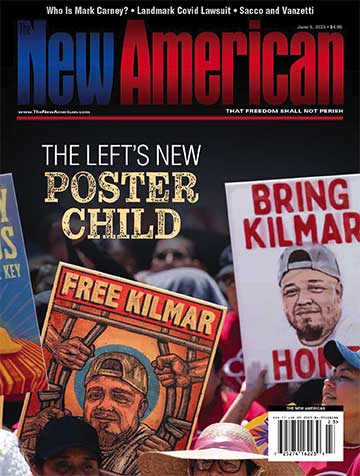
Most of the great filmmakers in American cinema will candidly admit some of the most enduring and memorable moments in their films were scenes or lines that were never in the script.
“Here’s looking at you, kid,” was never in the “Casablanca” script; it was a Humphrey Bogart ad-lib. “Leave the gun, take the cannoli,” from Francis Ford Coppola’s “The Godfather” was a riff from the actor. On a lighter note, the iconic scene in “Pretty Woman” when Richard Gere snaps a jewelry box on Julia Roberts’s fingers was originally a practical joke.
It is spontaneity that Mike Rowe, podcaster, author, television host and champion of the everyman, says he now understands after finishing his first movie, during which he placed in at the last minute something that becomes one of the most riveting parts of his history-themed documentary “Something to Stand For.”
Rowe said his impromptu interview (a conversation, really) with Andy Michael, a 91-year-old Korean War veteran at the World War II Memorial in Washington, D.C., was never in the script, and it wasn’t even in the treatment for the film that dives into some of the most extraordinary events that took place behind the scenes in our country — from the American Revolution, Civil War, World War II and the civil rights movement to today.
The film is full of larger-than-life stories that remind us that greatness begins with the least of us and that patriotism, even in our most flawed moments in history, is worth standing for. These are stories you have likely never heard. They are stories that make you see these men and women who shaped who we are today quite differently.
Rowe said he was standing in the World War II Memorial trying to collect his thoughts for a very specific, scripted standup he needed to do for the film when he noticed the veteran.
“The director had very thoughtfully put a nice X on the ground where I could hit my mark perfectly, the light was just so, and I was going to walk in, and I was going to say whatever I say, and we were going to check that box and move on to the next setup,” he said.
Rowe says it was at that moment when something caught his eye 30 feet from where he was supposed to do his stand. He stopped the production, grabbed the director and said they needed to stop what they were doing and go talk to a man Rowe saw sitting in a wheelchair staring at the memorial with tears running down his face.
“Happily, because my name’s in the title, they have to do that, but that’s not what you do when you’re making a movie. It doesn’t make any sense. It takes up time that you don’t have. But within seconds, everybody realized this is the heart of the movie,” Rowe explained.
Rowe’s first foray into filmmaking, “Something to Stand For” intentionally, from beginning to end, inspires the patriotism that used to be cherished by all of us no matter what our political party was. This feeling has diminished over the past two decades in the wake of two long wars, an education system that has stopped celebrating patriotism, and professional athletes taking a knee when the national anthem is played.
Spoiler — the last vignette of “Something to Stand For” digs into the complicated roots of “The Star-Spangled Banner” and should make those who applauded athletes kneeling blush with shame about their ignorance to the story undergirding that anthem.
Rowe said frustration at the state of our country led him to make the movie.
“I’ve just been increasingly bothered by this idea that patriotism and politics have become so intertwined,” he explained. “So I thought it would be fun to be able to say, ‘Look, while the country’s trying to figure out what to stand for and what not to stand for, I’ll tell you a few things that I think we can all still agree on, at least I hope we can.'”
Rowe said the first thing everyone will see is that it is not a Hollywood endeavor by any stretch.
“Every actor in that thing, 300 of them, they’re all from Oklahoma. The entire crew is from Oklahoma,” he said.
Rowe said the thought was that if you want to tell the story from the heart, you might as well go to the heartland. How it happened is just classic “Forrest Gump.”
He started writing these sort of Paul Harvey-esque “and now you know the rest of the story” stories about seven years ago for his highly popular “The Way I Heard It” podcast. A few years later, 30 of them went into a book he penned, then a television series.
“Just a few months ago, these guys at Fathom Theater Group called and said they were fans,” he said. “We toyed with doing a Christmas special, but honestly there are so many patriotic stories in this library of work I’ve done that it seemed like Independence Day would be a better occasion to at least weigh in on.”
Rowe said it came together fast after that.
“We picked nine stories that all kind of rhymed in a way with that idea and then stitched them together with this trip to D.C.,” he said.
Rowe said he doesn’t know if he can call it a documentary because of its nontraditional nature.
“I certainly can’t call it a traditional cinematic theatrical release, but it’s its own thing. And my hope is it’ll resonate on Independence Day,” he said.
The movie packs a powerful punch with Rowe at the center. Whether deliberate or not, he is set in the center of an empty theater doing what he does best, leaving the audience spellbound with his gift of old-fashioned American storytelling.
As he spins the tales, actors depict powerful characters and moments in our history. Scenes feature Martin Luther King Jr., Abraham Lincoln, a radio announcer who narrates a baseball game that never happened and eventually goes on to become president, and the extraction of a bull’s testicles.
Each one is a tribute to American exceptionalism, our enduring grit and the individualism that comes with sacrifice and hard work. It celebrates the heroes who helped shape our country in a way we rarely do anymore, which makes it all the more essential to see.
“Something to Stand For” will open on June 27 and run through the Fourth of July.
“Who knows after that,” Rowe said. “It is my hope this resonates. If it does, maybe it will run longer.”
Salena Zito is a CNN political analyst, and a staff reporter and columnist for the Washington Examiner. She reaches the Everyman and Everywoman through shoe-leather journalism, traveling from Main Street to the beltway and all places in between. To find out more about Salena and read her past columns, please visit the Creators Syndicate webpage at www.creators.com.
COPYRIGHT 2024 CREATORS.COM




